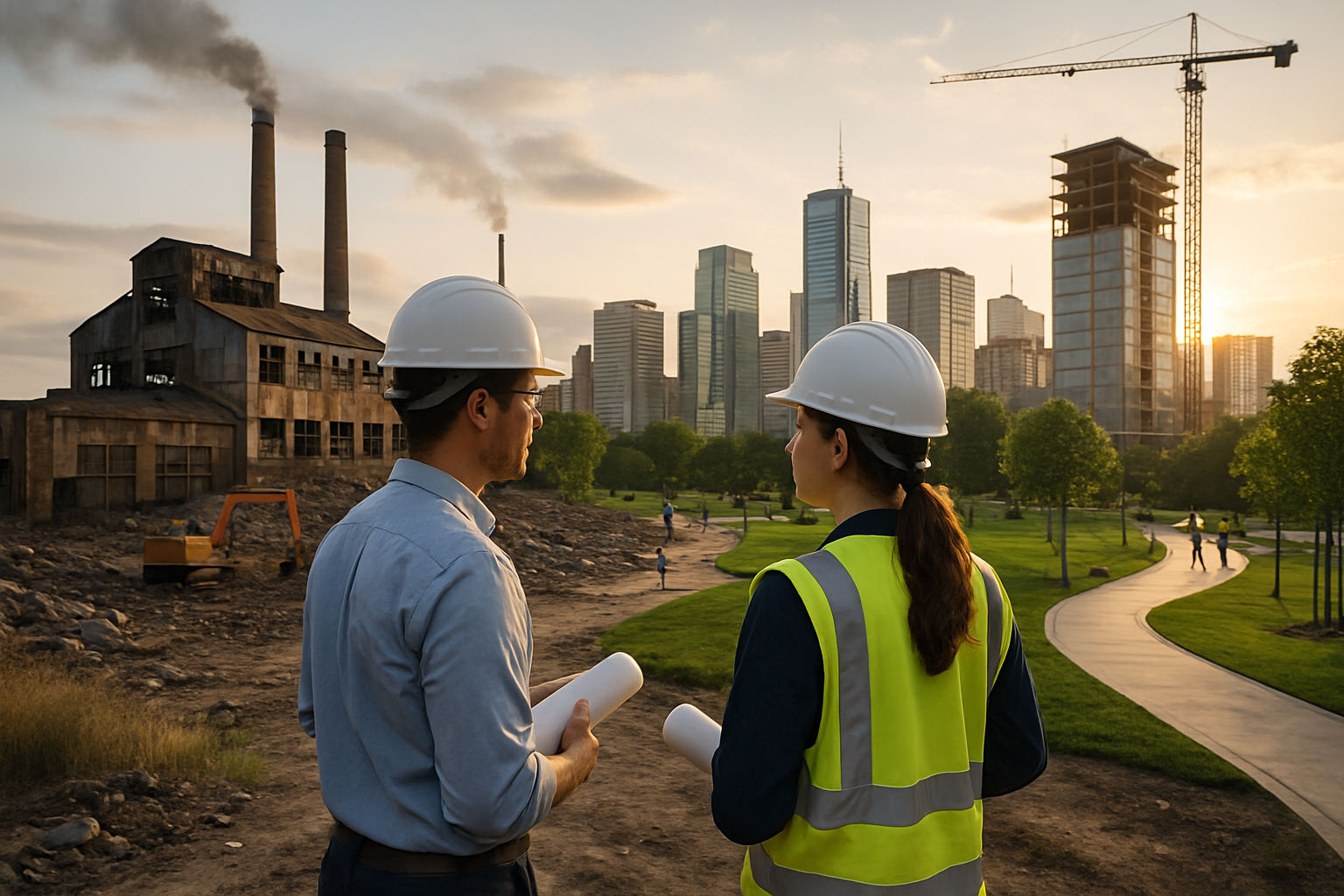Revitalizing Brownfields: The Next Frontier in Urban Real Estate
Imagine transforming contaminated urban wastelands into thriving residential and commercial spaces. This is the promise of brownfield redevelopment, a growing trend in real estate that's reshaping cityscapes and offering unique investment opportunities. With over 450,000 brownfield sites in the U.S. alone, this untapped market represents a significant frontier for innovative developers and savvy investors.

The concept of brownfield redevelopment isn’t entirely new, but recent years have seen a surge in interest and investment. Cities like Pittsburgh, which once bore the brunt of industrial decline, are now leading examples of successful brownfield transformations. The city’s SouthSide Works, built on the former site of a steel mill, now boasts a mix of retail, office spaces, and luxury apartments, demonstrating the potential for dramatic urban metamorphosis.
Economic Incentives Fueling Growth
One of the key drivers behind the brownfield boom is the array of economic incentives offered by various levels of government. These incentives are designed to offset the costs and risks associated with cleaning up contaminated sites. The U.S. Environmental Protection Agency (EPA) offers grants and technical assistance through its Brownfields Program, which has leveraged over $34 billion in cleanup and redevelopment funding since its inception.
State-level programs complement federal efforts. For instance, New York’s Brownfield Cleanup Program offers tax credits that can cover up to 50% of site preparation and groundwater remediation costs. These financial incentives are turning what were once liabilities into attractive investment propositions, catching the eye of developers who might have previously shied away from such challenging projects.
Environmental and Social Benefits
The appeal of brownfield redevelopment extends beyond financial returns. It aligns with growing environmental consciousness and sustainable development goals. By cleaning up contaminated sites, developers are not only creating valuable real estate but also improving environmental quality and public health in urban areas.
Socially, these projects often breathe new life into neglected neighborhoods. They can create jobs, boost local economies, and provide much-needed housing or commercial spaces without contributing to urban sprawl. The transformation of the Stapleton International Airport site in Denver into a mixed-use community is a prime example, showcasing how brownfield redevelopment can create vibrant, sustainable urban spaces.
Challenges and Risks
Despite the potential rewards, brownfield redevelopment is not without its challenges. The most significant hurdle is often the unknown extent of contamination, which can lead to cost overruns and project delays. Thorough site assessments and environmental due diligence are crucial, but even these can sometimes fail to uncover all issues.
Regulatory compliance adds another layer of complexity. Developers must navigate a maze of environmental regulations and obtain necessary approvals from multiple agencies. This process can be time-consuming and expensive, potentially deterring smaller developers or those new to brownfield projects.
Moreover, public perception can be a significant obstacle. Despite remediation efforts, some communities may remain skeptical about the safety of former industrial sites, particularly for residential use. Overcoming this skepticism requires transparent communication and community engagement throughout the development process.
Innovative Approaches and Technologies
The field of brownfield redevelopment is constantly evolving, with new technologies and approaches emerging to address its unique challenges. Phytoremediation, which uses plants to remove contaminants from soil and groundwater, is gaining traction as a cost-effective and environmentally friendly cleanup method. This approach not only remediates the site but can also create green spaces that enhance the overall development.
Advanced soil vapor extraction techniques and in-situ chemical oxidation are other innovative methods being employed to clean up contaminated sites more efficiently. These technologies can significantly reduce remediation timelines and costs, making brownfield projects more feasible and attractive to investors.
The Future of Urban Real Estate
As cities continue to grow and available land becomes scarcer, brownfield redevelopment is poised to play an increasingly important role in urban real estate markets. The success stories of transformed industrial sites are inspiring more ambitious projects, with developers eyeing larger and more complex brownfields.
The trend is also expanding beyond traditional urban centers. Smaller cities and towns with industrial legacies are recognizing the potential of their brownfield sites to drive economic revitalization. This shift could lead to a more distributed pattern of urban renewal, offering new opportunities for investors looking beyond major metropolitan areas.
In conclusion, brownfield redevelopment represents a significant frontier in urban real estate. It offers a unique blend of financial opportunity, environmental stewardship, and community revitalization. As technology advances and developers gain more experience in navigating the challenges, we can expect to see more of these once-neglected sites transformed into vibrant, sustainable urban spaces. For investors and developers willing to take on the complexities, brownfields offer the chance to be at the forefront of a transformative trend in real estate.





